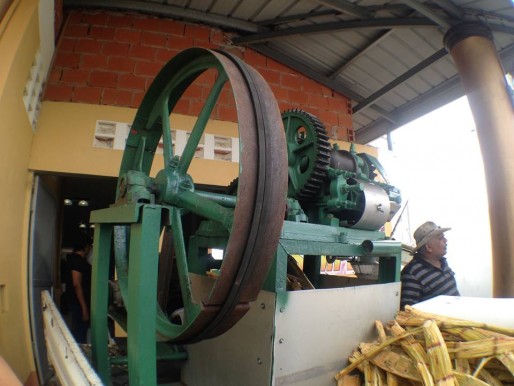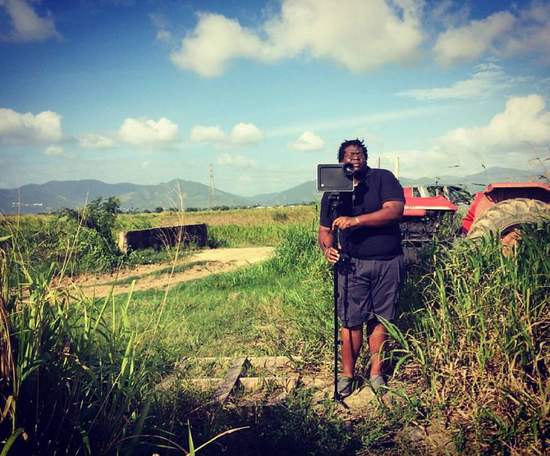This is one in a series of blog posts from the MJ Bear Fellows, three journalists under 30 selected each year who are expanding the boundaries of digital news. Applications for the 2016 MJ Bear Fellowship are now open – you can learn more here.
In November 2015, we launched a web series on our Tech4agri blog, in which we feature technology, climate change, innovations and success in agriculture. We aim to inspire youth who have an interest in agriculture across the Caribbean, providing them with the information they need while simultaneously dispelling the negative perceptions associated with agriculture.
Agriculture is a critical issue in Trinidad and Tobago. We have an extremely high food import bill, but despite that, agriculture remains one of the smallest contributors to Trinidad and Tobago’s gross domestic product. As a result, the sector receives the least governmental allocation for its budget every year.
With a focus on Trinidad and Tobago, we are working to transition from a simple blog to a social enterprise, with Tech4agri: the web series serving as our main focus. (See the ongoing series, among other videos, on our YouTube channel.) We are among the first to utilize this type of media for agriculture, and the very first to do so in the Caribbean region. Here, we explain how we’re transitioning from a mobile-first approach to adopt a social video approach — which, of course, is still targeting a mobile audience.
Staying ahead of the curve
The trend of media production in agriculture is increasing. Initially, what really made us stand out from other types of production companies was our use of mobile journalism — in how we both gathered and distributed news.
Using #mojo, we quickly learned we can produce anything, from a compelling photograph to a two-minute news report to a two-hour documentary.
While having a mobile-friendly website and using our phones to produce pieces has a lot of benefits, very few producers in the region have chosen this approach. Still, we wanted to continue to evolve to distinguish our work and reach more audiences, so we’re focusing now on social video — content designed to increase audience engagement through social activity around a given video.

An antique sugar cane juicer brought back to life by a farmer and his family was featured in the very first episode of the Tech4agri: the web series
Keeping our focus on entrepreneurial agriculture work
Part of our mission is to let agriyouth in the Caribbean know there is support for them. Many young people simply do not make the connection between what’s on their plate and where their food comes from, which means a good part of our work is “agro-vacy.” Agricultural is perceived to be a hard career with little reward, and farmers are often looked down upon.
The nature of our work is tied into this mission, as we, too, are “agripreneurs” — my team and I aim to provide a living for ourselves and an avenue for career development in agri journalism and communications.

Snapshot: The writer out in the field, a semi-rural area of Trinidad featuring rice production and water management.
“How do we make agriculture as exciting as it really is? How can we generate and keep the interest of the public on just how important it is? How do we facilitate learning among agriyouth of all kinds while simultaneously supporting them? I may have an answer to these questions.”
Tracking our analytics to improve content
To measure our successes, we use YouTube’s analytics as well as WordPress stats because we release each episode via the blog. These metrics act as a solid foundation for understanding our audience and growth potential.
Over the initial five episodes of the webcast, we tracked 1,738 views. In the final quarter of 2015, when our series initially was released, our channel had a total watch time of 5,346 minutes. Watch time helps creators understand the quality of their videos and how well different videos keep viewers engaged.
In comparison to the previous quarter, from July to September, there was a 200 percent increase in watch time over our previous videos, which were unrelated to this new, more strategic web series (the increase was 199.75 percent exactly, if you must know, but nonetheless superb!).
For our videos, we have an average view duration of 3:04. Our audience watches an average of 45 percent of each video, a number we hope to improve upon. These early metrics were an important lesson for us; young people have short attention spans! Now, our episodes are shorter. Acting on the data should improve the percentage of people viewing a video in its entirety.
We also had a few increases in likes, shares, comments and subscribers, but what really stood out to us was the fact that we saw zero dislikes for the quarter. Absolutely none! So we are clearly doing something right.
YouTube analytics also provide other stats, such as playback locations, traffic sources and devices, as well as other engagement reports, and we’ve used the data to make our social videos shorter, contain more focused content and improve audio quality. It’s a powerful tool to help us measure success in the future.
What’s Next
Our work is ongoing. I’m happy to report that our project has made it to the finals of the Caribbean Innovation Challenge. With this competition we hope to win much-needed funding to improve our equipment and human resources while simultaneously executing our business plan.
So there you have it: our mobile story thus far.

